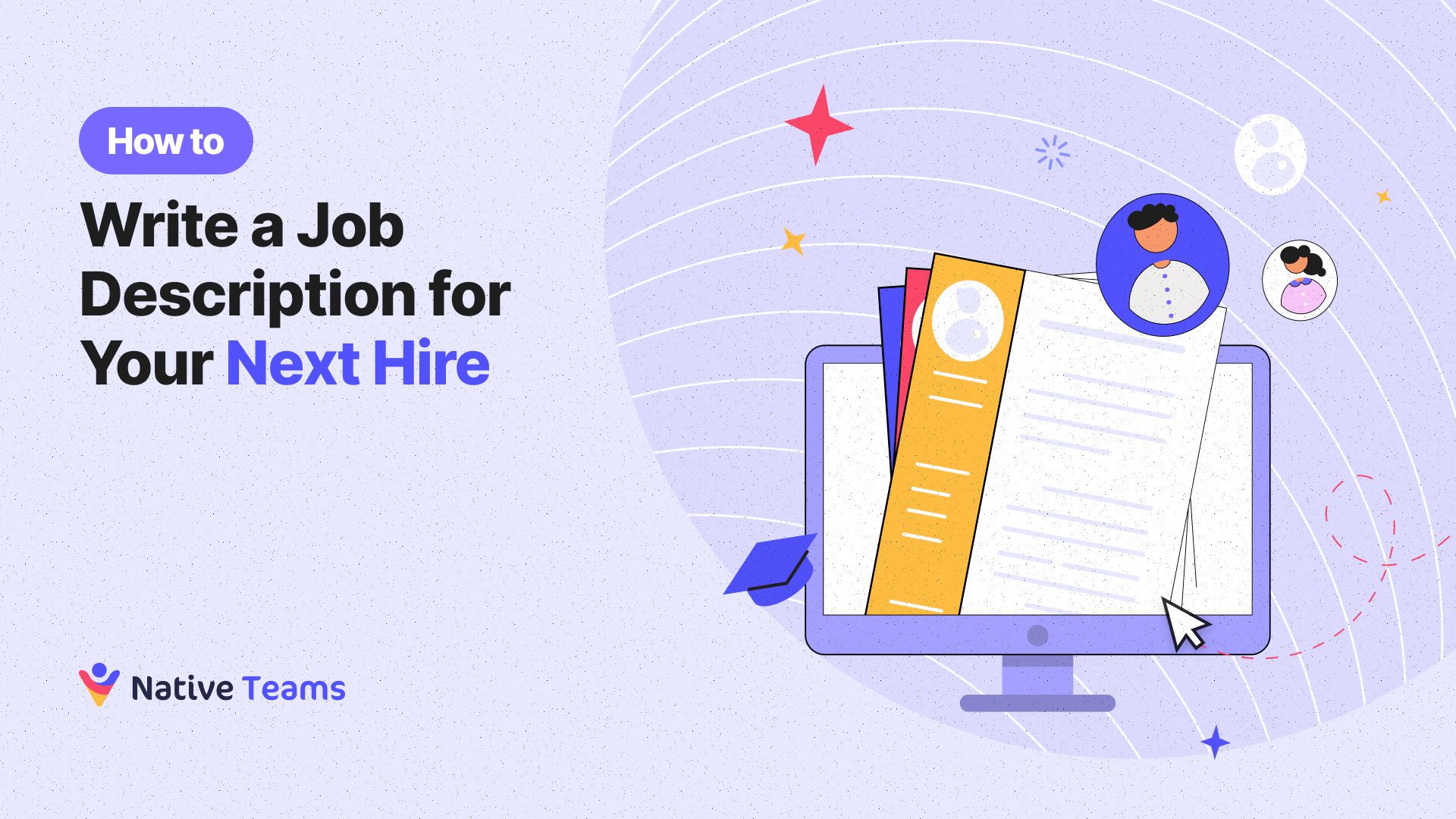How to Write a Job Description for Your Next Hire
Crafting an engaging job description is crucial when looking for the most skilled candidates for a job position. It helps you stand out in the large sea of job listings and quickly scoop up the best talent before they’re gone.
So, whether you work in HR or are a hiring manager, keep reading as we’ve prepared all the tips and tricks you need to write the perfect job description.

Understanding the purpose of a job description
A job description clearly outlines the skills, responsibilities, qualifications, and duties of a certain role. It also provides a snapshot of the company’s core values and mission.
A well-crafted job description has enough details for applicants to decide whether they’re the right fit for the position. According to research, the quality of a job description plays a key role when job seekers apply for a job. In other words — the better the job description, the more talented and motivated candidates flock towards your business.
Key elements of an effective job description
Writing a job description isn’t an easy feat, and a generic text with multiple bullet points won’t do the trick in today’s competitive market. To avoid your job description being overlooked, here are all the essential components of an effective job description, everything from the job title to your company culture.
1. Writing a compelling job title
It’s essential to present the job title in the right way, as most candidates will scan this key element first and see whether it matches what they’re looking for.
Being precise and using familiar lingo ensures that your job description catches job seekers’ attention. Sticking to recognisable job titles will make the language more inclusive and understandable at a single glance.
2. Crafting the job summary
The job summary should encapsulate the nature of the job and a clear overview of what makes your company unique.
Outline the role’s main responsibilities and how it contributes to the organisation’s goals without delving into specific details. Plus, you could emphasise the significance of the role and how it aligns with broader objectives or impacts other departments.

3. Detailing job responsibilities
When highlighting the job responsibilities, it’s important to prioritise simple and core functions that are critical to the role.
Another way to understand what the job entails is to provide insight into the day-to-day activities of the role. This will set accurate expectations and allow the candidate to determine whether the position and the company are the right fit for them.
4. Listing required qualifications and skills
The perfect job description should strike a balance between hard skills like technical expertise and soft skills that you envision for the candidate to have.
While it might be tempting to detail every ideal qualification, an exhaustive list could deter potential candidates. So, distinguishing between essential and desirable qualifications and skills will attract a more diverse set of candidates.
5. Including salary range and benefits
Quality candidates look for job opportunities that will meet their salary requirements. However, most job descriptions nowadays are missing salary information.
Stand out from the other employees by being transparent about the salary and including top benefits. Unlimited PTO, flexible working hours, and gym membership could be huge incentives for candidates to apply.
6. Reflecting your company culture
A job description is the perfect opportunity to showcase your company’s mission, vision and overall company culture.
This section should do more than just inform the candidate about what your company does. It should make the candidate excited about the idea of working for your company. Remember, it’s all about adjusting your approach to tailor the candidates’ needs.
You might be interested in our article on how to hire remote workers

Avoiding common mistakes
Knowing how to write a good job description also means knowing what to leave out. Here are some common pitfalls you should avoid when writing a job description.
- Jargon and complex language: Using industry-specific jargon or overly complex language can alienate potential candidates who might not be familiar with these terms. Use clear, simple language that is easily understandable across different audiences.
- Vagueness and ambiguity: Vague descriptions fail to convey the true nature of the role. Avoid generic phrases and provide specific details about the responsibilities, expectations, and goals associated with the position. Use concrete examples to illustrate tasks. Consider using a rephraser to eliminate vagueness and ensure your descriptions are easy to read and understand.
- Unrealistic expectations: Setting overly high or unrealistic expectations in terms of qualifications, years of experience, or skill sets might deter qualified candidates from applying. Be realistic about what is truly necessary for the role versus what would be a bonus.
Legal considerations
Aligning your job description with local employment laws and regulations will prevent legal issues or discrimination claims that may arise from biased language or discriminatory requirements. Moreover, it’ll create a transparent hiring process, attracting diverse candidates while promoting a positive employer brand.

To wrap up
In creating an effective job description for your next hire, precision and clarity are key. By implementing the key elements mentioned above with concise language, you can create a compelling narrative that attracts the right candidates for your team’s success.
